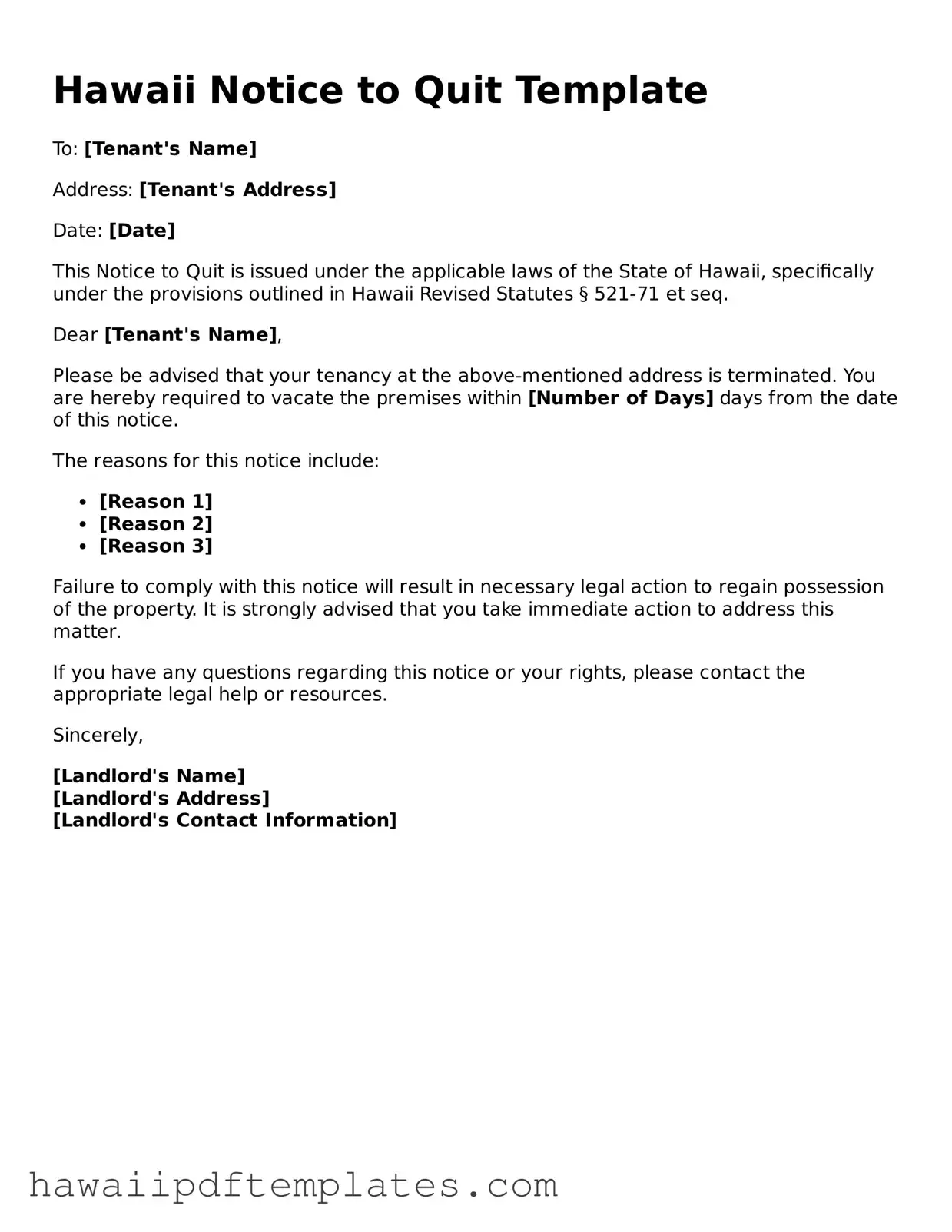Free Notice to Quit Document for Hawaii State
The Hawaii Notice to Quit form is a legal document used by landlords to inform tenants of the termination of their rental agreement. This form outlines the reasons for the eviction and provides the tenant with a specified period to vacate the premises. Understanding this form is essential for both landlords and tenants to ensure compliance with state laws.
To fill out the form, please click the button below.
Customize Form Online
